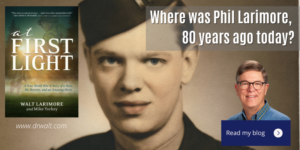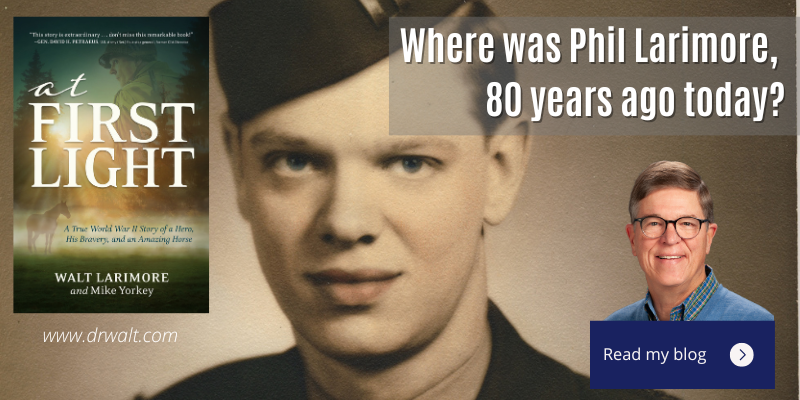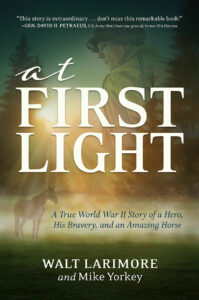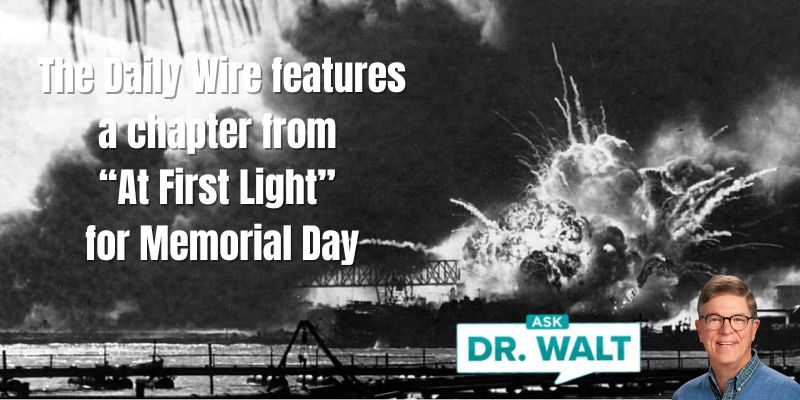
Becoming an everyday missionary wherever God plants you!
January 17, 2024
Ask Dr. Walt 34 – To become a better parent focus on your parenting style
January 19, 2024January 17, 1944 – A teenage WWII hero prepares to ship out – Part 5 – Coast Guard Beach Patrol
After a week at Fort Meade, Phil received orders to take a train 200 miles to Camp Patrick Henry[1] in Warwick County, Virginia. With the usual amount of starting, stopping, switching, and uncoupling, the trip took about ten hours.

Camp Patrick Henry, named after one of the Founding Fathers of the United States, was founded in late 1942 and was a 1,700-acre complex built in a large virgin forest interspersed with impenetrable swamps, leading soldiers to call it “Swamp Patrick Henry.” The camp also had a Norfolk & Western train system to transport soldiers to shipside at Chesapeake Bay.
Phil was fortunate to learn from another officer in the Officer’s Club about the Coast Guard Beach Patrol. That weekend he got a pass and hitched a ride to their station and stables in nearby Virginia Beach, about an hour away. Phil was delighted to be invited to go on a horseback patrol.
The shorter of his two riding partners explained, “We work in pairs, riding about one hundred feet apart, usually covering a two-mile stretch of the beach. We’re armed with portable radio-receiver transmitters, compasses, whistles, pistols, and rifles, and we can cover difficult terrain pretty quickly and efficiently. That’s why they call us the ‘Sand Pounders.’”
“I prefer the term ‘Coast Guard Cavalryman,’” the taller guardsman said, laughing. “Or ‘Sailors on Horseback.’ Anyway, our job is to report offshore enemy vessels and to prevent people onshore from communicating with the enemy at sea.”
“When did you all begin using the horses for beach patrols?” Phil asked.
“Just five months ago, in September 1942,” one of the men told him. “Within one month, our mounted portion soon became the largest segment of the patrol.”
“Where do your horses come from?”
“All from the Army. The Army Remount Service provided all the riding gear required, while the Coast Guard provides our uniforms.”
The other man added, “When the mounted program began, a call went out for personnel. A mixed bag of people responded—polo players, cowboys, former sheriffs, horse trainers, Army Reserve cavalrymen, jockeys, farm boys, rodeo riders, and stuntmen. Most of our boys trained on Hilton Head, one of the sites of the dog training schools.”
“Enough chitchat!” one of the men yelled. “Let’s patrol.” He spurred his horse to a gallop, and the others followed. Phil was exhilarated by the salty wind in his hair. The power of the horse underneath him reminded him of an adage he learned at Fort Benning: Horses lend us the wings we lack.
The jaunt allowed him to borrow a feeling of freedom, even if only for a few moments, mixed with delight, exhilaration, and true happiness, which would vanish as quickly as it occurred.[1]
[1] Larimore, At First Light.
© Copyright WLL, INC. 2024





